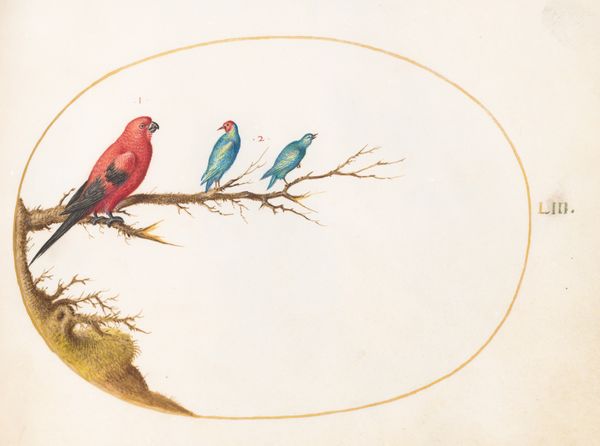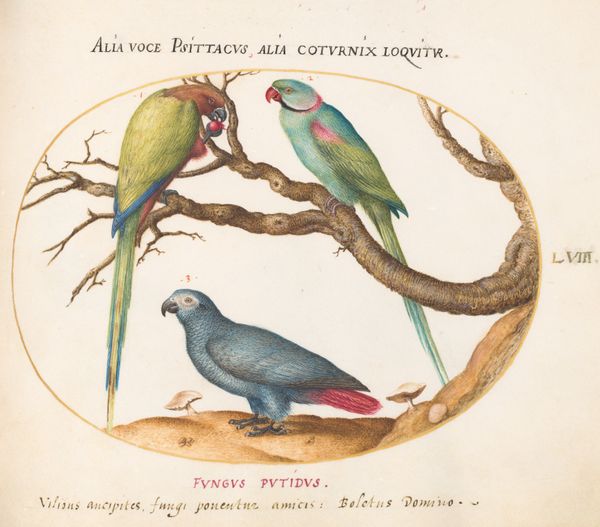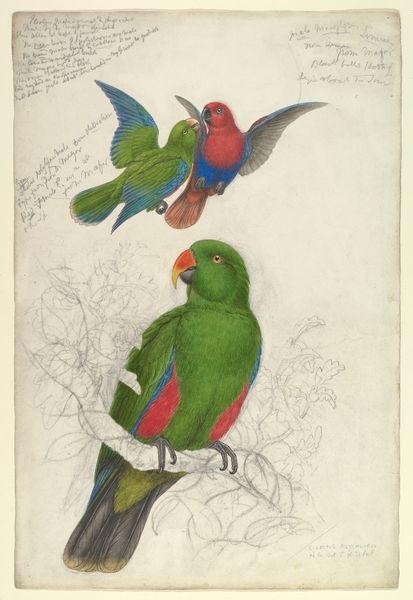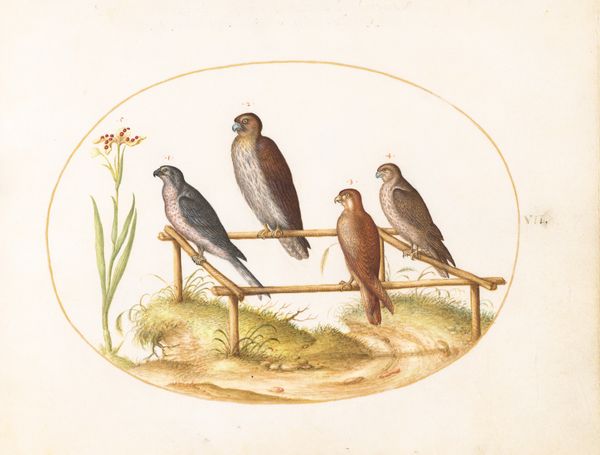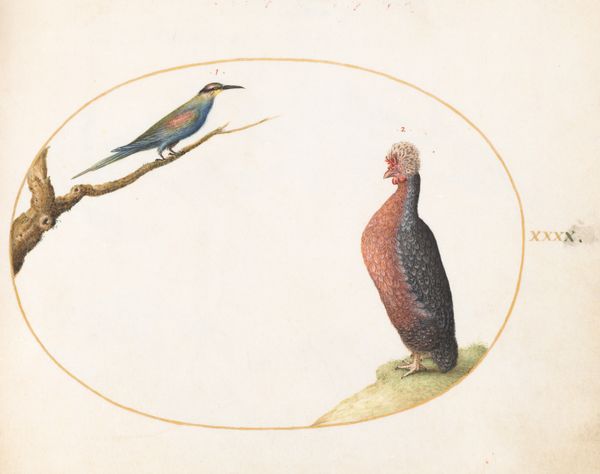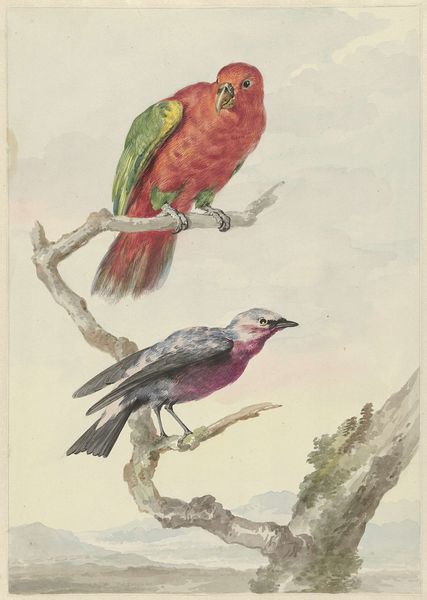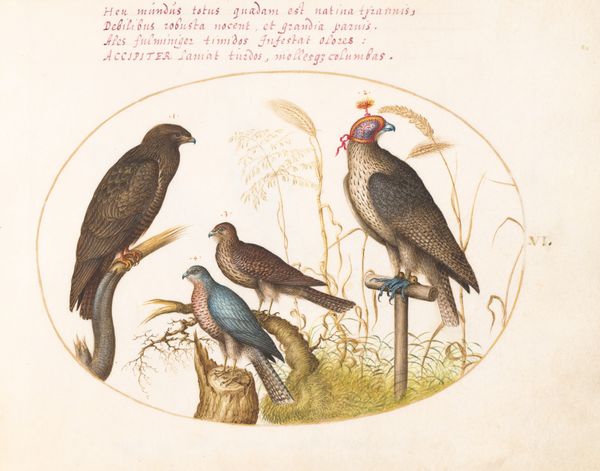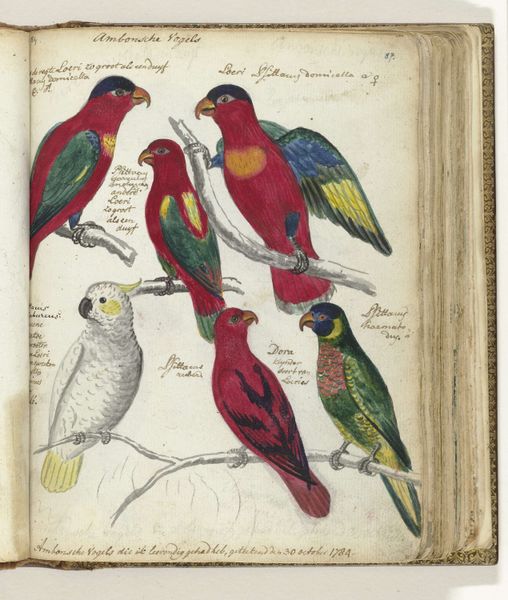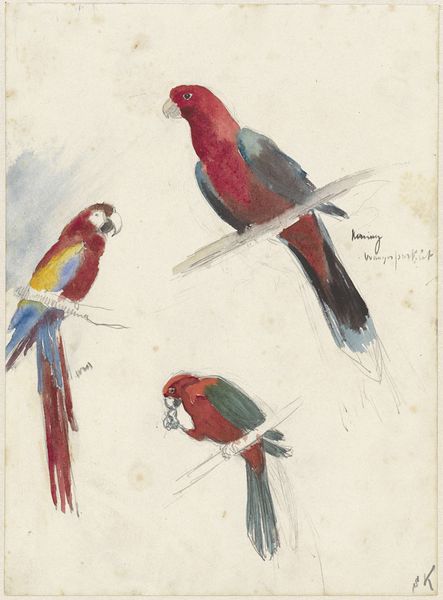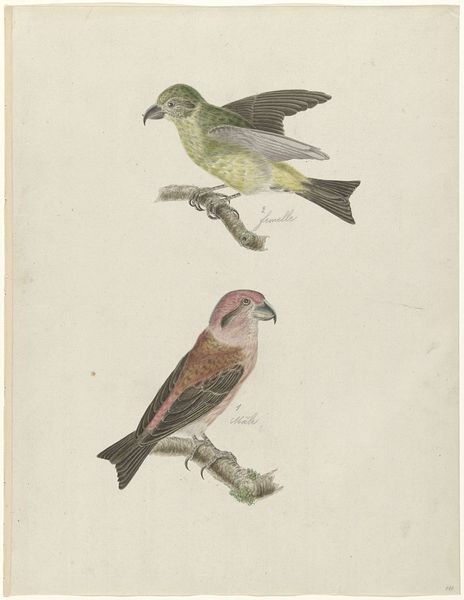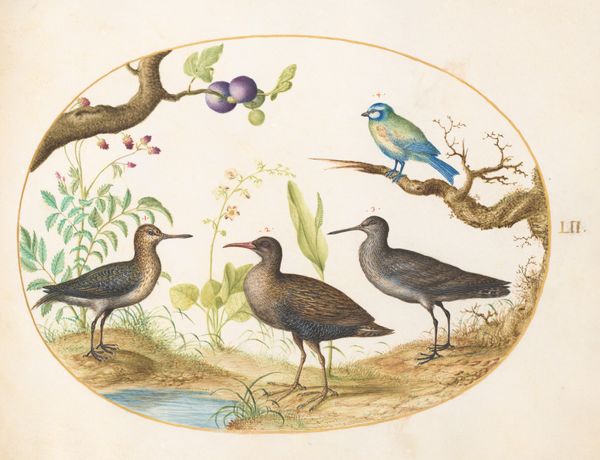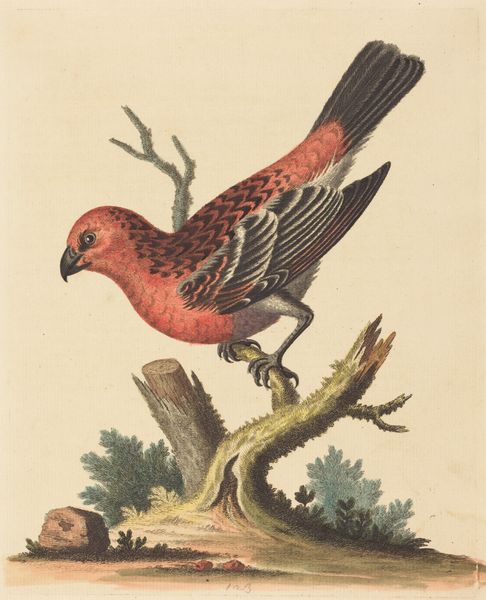
drawing, coloured-pencil, print, watercolor
#
portrait
#
drawing
#
coloured-pencil
# print
#
mannerism
#
watercolor
#
coloured pencil
#
watercolour illustration
Dimensions: page size (approximate): 14.3 x 18.4 cm (5 5/8 x 7 1/4 in.)
Copyright: National Gallery of Art: CC0 1.0
Curator: The initial impression is strikingly elegant. A serene composition, somehow both still and vividly alive. The use of color, particularly in the central figure, the large parrot, pulls the viewer into an intimate observation of natural beauty. Editor: Indeed! What we're seeing is Plate 57 from Joris Hoefnagel's *Animalia Rationalia et Insecta (Ignis)*, dating back to 1576. It's a beautiful watercolor and colored pencil drawing, subsequently reproduced as a print, now residing in the collection. What I find compelling is how Hoefnagel navigates the burgeoning scientific interest of the period. Curator: The prominent central scarlet macaw exudes authority, almost patriarchal between the two smaller, green parrots. The text above, “Senex Psittacus negligit fervida,” perhaps references the indifference of old age, of knowledge possessed and maybe disregarded? Editor: It's a poignant detail. That Latin inscription provides another interpretive layer, pointing towards the Renaissance fascination with classical wisdom alongside empirical observation. Hoefnagel wasn't just painting pretty birds; he was situating them within a humanist worldview. Consider, too, that the increased European contact with the Americas brought such exotic specimens into noble collections and subsequently into visual culture. Curator: The symbolic weight given to birds through ages persists, especially in their ability to carry messages, literally or spiritually. And consider how Hoefnagel captures the texture and almost iridescent quality of the feathers. One sees individual filaments; that’s dedication beyond mere representation. This avian trio perches upon the tree as knowledge keepers within the illuminated world. Editor: That precise rendering elevates the parrots beyond simple observation, transforming them into cultural artifacts in themselves. Objects both observed and possessing their own history; subjects situated at the heart of global exchange. That it survives as both a drawing and print highlights how such imagery circulated to shape the European understanding of the world and its resources. Curator: Looking more deeply into it, beyond just the visual enjoyment of form and color and that sense of nature so carefully rendered, I discover more resonant depths. The birds seem like relics from lost paradises, presented now for our study and reflection. Editor: Absolutely, this plate acts as a powerful testament to art's intersection with natural history, social status, and colonial power.
Comments
No comments
Be the first to comment and join the conversation on the ultimate creative platform.
